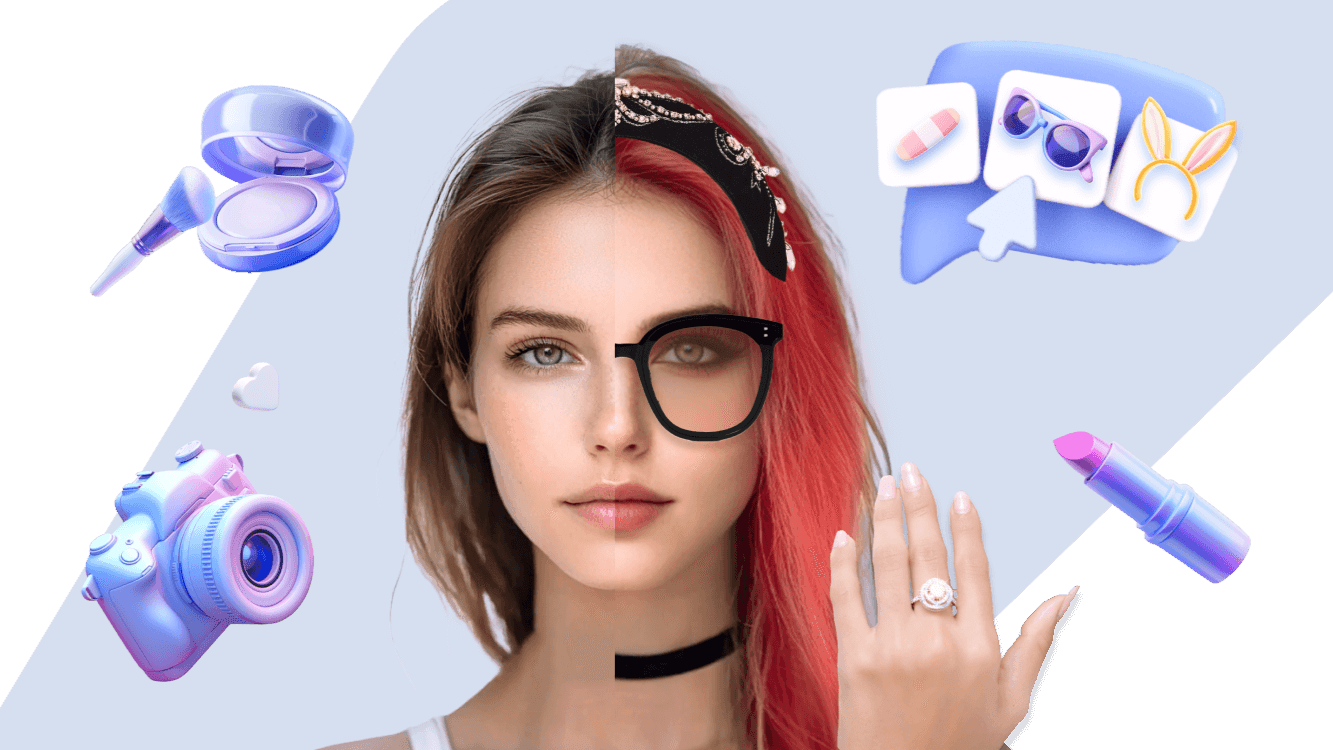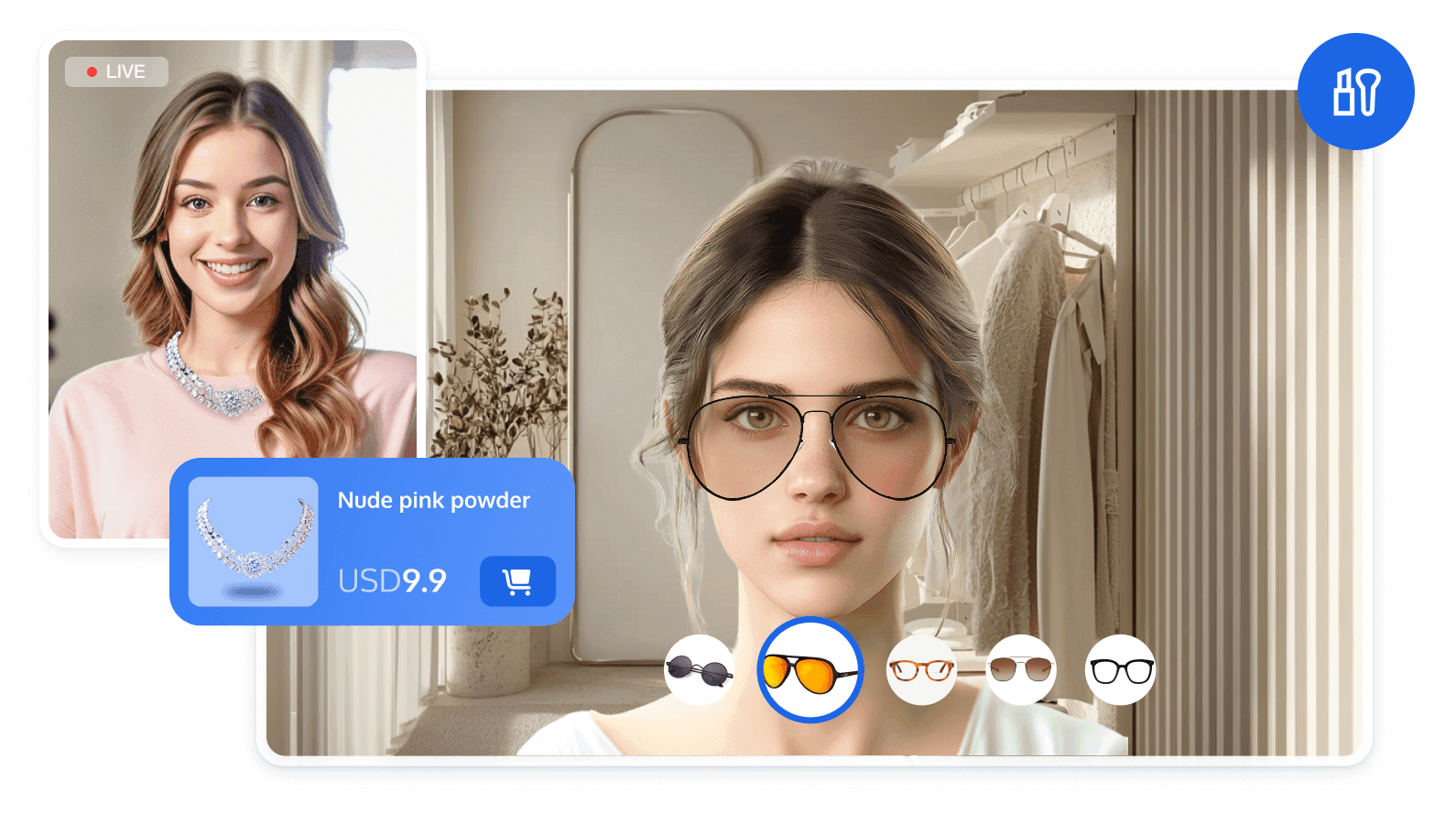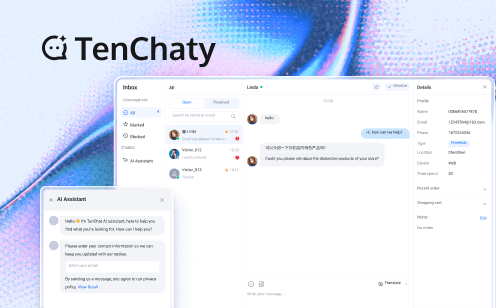Virtual Try-On: How to Bridge the Gap Between Digital Try-On and Physical Feel
Virtual try-on technology represents a revolutionary advancement that transforms traditional physical fitting experiences into interactive digital encounters. By seamlessly integrating spatial computing with generative artificial intelligence, this technology creates a sophisticated digital mirror experience for consumers. Users can now simply tap a screen to visualize jewelry on themselves or turn their bodies to observe how clothing drapes and fits—all virtually. Research indicates this shift aligns perfectly with changing consumer preferences, with 90% of Generation Z believing virtual try-on better suits their digital-native habits than conventional fitting methods.
This "what you see is what you get" approach is fundamentally reshaping the global retail landscape across multiple sectors. The business impact is substantial and measurable: fast fashion giant SHEIN has reduced operating costs by 28% through implementing virtual try-on solutions, while luxury brand Gucci reported an impressive 45% sales growth after introducing their virtual shoe-fitting feature. The technology's versatility has enabled successful adoption across diverse retail categories including e-commerce platforms, luxury goods, and sports brands. As the technology evolves from simpler augmented reality applications toward more immersive extended reality experiences, virtual try-on is creating a sophisticated network that bridges the physical and digital worlds, empowering every consumer to become a stylist of their own digital persona.

What is Virtual Try-On?
The implementation of virtual try-on technology relies on the integration of multiple advanced technologies, mainly including the following three aspects:
- Augmented reality (AR) spatial positioning: Through AR technology, the system can accurately identify and locate the real space where the user is located, and seamlessly integrate virtual products with real scenes. For example, when trying on clothes, AR technology can ensure that the virtual clothes perfectly match the user's body position, presenting a real wearing effect.
- AI-driven dynamic feature recognition: With the help of artificial intelligence algorithms, the system can capture and analyze the user's dynamic features, such as facial expressions, body postures, etc. in real time. This enables virtual try-on to dynamically adjust according to the user's real-time actions, providing a more natural and realistic experience. For example, when trying on glasses, AI can automatically adjust the position and angle of the glasses according to the user's face shape and facial features to ensure the best fitting effect.
- High-precision 3D modeling and material simulation: Using high-precision 3D modeling technology, virtual products can be presented in an extremely realistic form. At the same time, material simulation technology can simulate the texture and gloss of different materials, allowing users to feel details that are no different from the real objects in virtual try-on. For example, when trying on jewelry products, users can feel the smoothness and texture details of the jewelry through the screen.
Compared with traditional try-ons, virtual try-ons have the following disruptive advantages:
- Cost savings and efficiency improvements: Users do not need to go to physical stores or buy a large number of samples for try-ons. They can complete the try-on process by simply operating on their mobile phones or computers. This not only saves time and money for consumers, but also reduces the operating costs of merchants.
- Break through time and space constraints, what you see is what you get: Virtual try-ons are not restricted by time and space, and users can try them on anytime and anywhere. At the same time, through high-precision image rendering and real-time feedback, the virtual try-on effect seen by users is highly consistent with the actual wearing effect, truly realizing "what you see is what you get".
- Achieve personalized superposition and precise adaptation: With the help of AI technology, virtual try-ons can provide personalized try-on recommendations based on users' personal characteristics and preferences. Whether it is the style, color, or matching of accessories, it can accurately meet the needs of users and achieve a perfect combination of personalization and precise adaptation.
How Virtual Try-On Works?
Real-time Human Tracking System
At the core of virtual try-on technology lies sophisticated human tracking systems that capture and analyze user features with remarkable precision. These systems form the foundation of realistic digital experiences by creating accurate representations of users and their movements in virtual space. The technology operates through three specialized tracking components:
1. Facial Feature Capture for Beauty and Eyewear
High-precision facial feature capture technology enables the system to identify key points on the user's face with remarkable accuracy. This precision allows for realistic virtual application of beauty products and perfect fitting of eyewear. For example, when trying virtual lipstick, the system precisely applies the selected color to the user's lips, creating a lifelike preview of how the product would appear in reality. Similar technology enables users to see how different eyeglass frames complement their face shape before making a purchase.
2. Hand Joint Motion Tracking for Accessories
Advanced hand tracking technology captures the user's hand movements and gestures in real time, creating natural and realistic try-on experiences for rings, bracelets, and nail art. Users can freely move their hands—turning fingers, making fists, or spreading hands—to observe how accessories look from different angles and during various movements. This interactive capability provides a much more informative experience than static images ever could.
3. Full Body Dynamic Modeling for Clothing
The most sophisticated component is full body dynamic modeling, which creates a real-time digital model of the user's entire physique. This technology simulates how fabrics drape, fold, and move on the user's specific body type. When users walk, turn, or pose, the virtual clothing responds naturally, showing accurate fit, movement, and fabric behavior. This helps shoppers understand not just how a garment looks, but how it will perform in real-world situations.
Cross-Platform Accessibility
For virtual try-on technology to achieve widespread adoption, it must be easily accessible across multiple devices and platforms without creating friction for users.
1. WebAR: Instant Experience Without Downloads
WebAR technology eliminates traditional barriers to virtual try-on by providing an immediate experience through any web browser. Users can access sophisticated try-on features directly from product pages without downloading separate applications. This frictionless approach significantly increases adoption rates and engagement. For instance, shoppers browsing an online jewelry store can simply click a "Try On" button and immediately see how earrings look on their face using their device's camera.
2. Mobile SDK Integration for Apps
For brands and retailers with dedicated mobile applications, deeply integrated Software Development Kits (SDKs) offer powerful virtual try-on capabilities. These lightweight, high-performance tools seamlessly integrate with existing apps while ensuring stable operation and smooth user experiences. Leading fashion brands have implemented these SDKs to create personalized shopping journeys within their apps, resulting in longer engagement times and higher conversion rates compared to traditional shopping interfaces.
What Value Virtual Try-On Technology Offers?
For Consumer
Virtual try-on technology not only changes the way of shopping, but also redefines the shopping experience of consumers, bringing unprecedented value to consumers.
- Zero trial and error cost (unlimited attempts): Consumers do not need to worry about the waste caused by purchasing inappropriate products, and can try various products to find the style and style that suits them best. For example, when trying on clothes virtually, users can switch between different styles, colors and sizes in a few seconds and easily find the most satisfactory match.
- Social experience (real-time sharing of outfits): Virtual try-on supports users to share the try-on effects on social media in real time and interact with friends and fans. This social experience not only increases the fun of shopping, but also expands the influence of the brand. For example, users can share the effects on Instagram or WeChat Moments immediately after the virtual try-on to exchange their experiences with others.
- Intelligent recommendation system (AI style matching): With the help of AI technology, virtual try-on can provide personalized recommendations based on the user's body shape, skin color, style preferences, etc. This intelligent recommendation not only improves the efficiency of shopping, but also helps consumers discover more potential preferences.
For Enterprise
Virtual try-on technology has brought significant commercial benefits to enterprises and has become an important engine for driving enterprise growth.
- Conversion rate increased by 35%+: Through virtual try-on, consumers can more intuitively understand the effect of the product before purchasing, thereby significantly increasing their willingness to purchase. For example, after a well-known e-commerce platform introduced the virtual try-on function, the conversion rate of its clothing products increased by 35%.
- Return rate reduced by 50%+: Since consumers have confirmed the suitability of the product through virtual try-on before purchasing, the return rate has been greatly reduced. This not only reduces the operating costs of the enterprise, but also improves customer satisfaction.
- User stay time increased by 300%: The interactivity and fun of virtual try-on attract users to stay on the platform longer. Data shows that after the introduction of the virtual try-on function, the average length of time users stay on the platform has increased by 300%.

The Applications of Virtual Try-On
Virtual try-on technology has been widely used in many industries, bringing new development opportunities to various industries.
1. Beauty Industry
- Virtual lipstick color trial (color number switching in seconds): Users can preview the effects of different lipstick colors on their lips in real time through mobile phone applications, switch colors in seconds, and find the color that suits them best.
- Foundation skin color matching algorithm: With the help of AI technology, the system can accurately recommend the most suitable foundation color number based on the user's skin color, skin texture and other characteristics, reducing returns due to inappropriate color numbers.
2. Fashion Retail
- AR glasses try-on (smart nose pad adaptation): Through AR technology, users can virtually try on various styles of glasses, and the system will intelligently adapt the nose pads according to the user's nose bridge shape and face shape to ensure comfort and beauty of wearing.
- Virtual wardrobe construction: Users can build their own wardrobe in a virtual environment, view the matching effects of different clothes at any time, and facilitate the management and planning of their own clothing resources.
3. Social field
- Real-time filters: Users can apply various filters in real time during video calls or live broadcasts to improve the picture effect, increase interactivity and fun.
- Facial beauty technology: With the help of AI technology, the system can beautify the user's face in real time, providing a natural and beautiful effect to meet the needs of users in social interactions.
Conclusion
Virtual try-on technology represents a significant advancement in bridging the gap between digital shopping and physical experiences. As explored throughout this article, this technology functions through sophisticated real-time human tracking systems that capture facial features, hand movements, and full-body dynamics to create realistic digital representations. The cross-platform accessibility of modern solutions ensures users can engage with these experiences across various devices without friction.
For consumers, virtual try-on delivers tangible benefits including risk-free experimentation, enhanced social shopping experiences, and personalized recommendations. Businesses implementing this technology have documented substantial improvements in conversion rates, significant reductions in return rates, and dramatically extended customer engagement times.
Tencent Real-Time Communication (TRTC) offers a comprehensive virtual try-on solution through advanced Beauty AR SDK. Our technology offers:
- Effortless Accessibility & Cross-Platform Compatibility: Experience virtual try-on directly through any web browser without downloading applications. Our browser-based AI inference ensures seamless compatibility across devices and operating systems, eliminating technical barriers for your customers.
- Advanced AI Recognition & Real-Time Processing: Our technology delivers unmatched precision with 468 facial detail tracking points for perfect product placement. Optimized for performance, our solution provides smooth, lag-free experiences even on mid-range devices, ensuring high user satisfaction.
- Comprehensive WebAR Experience: Beyond virtual try-on, our SDK includes beautification filters, color adjustments, 2D/3D stickers, virtual avatars, and background replacements—creating a complete digital transformation toolkit for your brand experience.
- Professional Creation Tools with Simple Implementation: Our intuitive AR creation platform enables marketing teams to develop custom effects without technical expertise, while providing developers with flexible APIs for seamless integration into existing applications.
Ready to Transform Your Customer Experience? Start your journey with virtual try-on today. For personalized assistance, contact us to discuss your specific implementation needs.
FAQs
Q1: How to achieve virtual try-on?
A1: Using AR and AI technology, through mobile phone cameras and algorithms, real-time capture of body and facial features, integrating virtual objects with real scenes.
Q2: What industries are virtual try-on suitable for?
A2: It is widely used in e-commerce, beauty, fashion, glasses and other industries, helping merchants improve user experience and sales conversion rate.
Q3: What is the difference between virtual try-on and traditional try-on?
A3: Virtual try-on is more convenient, and users can operate it anytime and anywhere; the effect is previewed in real time and multiple comparisons can be made; the cost is lower and a large number of physical samples are not required.
Q4: How does virtual try-on perform in terms of head accessories?
A4: Users can try on various head accessories in real time, such as glasses, hats, etc., to accurately match face shape and personal style.
Q5: How does virtual try-on improve the shopping experience?
A5: Let users intuitively feel the effect of the product, reduce purchase uncertainty, and enjoy a convenient and efficient shopping process.
Q6: What is the future development trend of virtual try-on technology?
A6: More application scenarios will be expanded in the future, such as tactile simulation, AI designers, 3D printing fitting, etc., to bring users a richer and more realistic experience.


